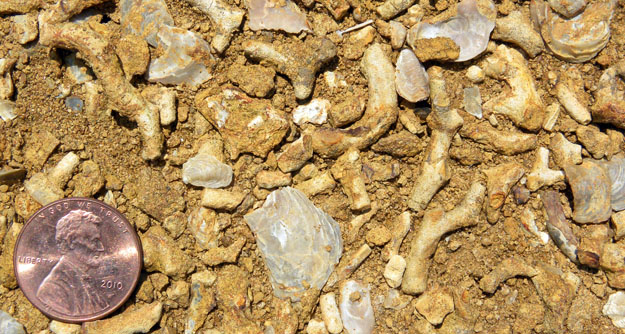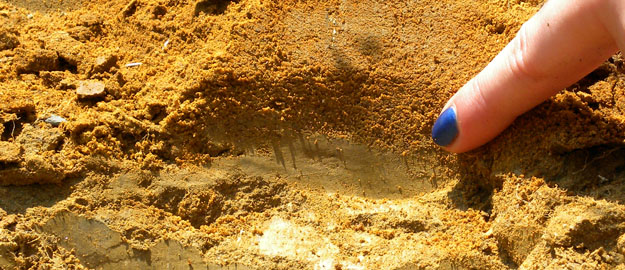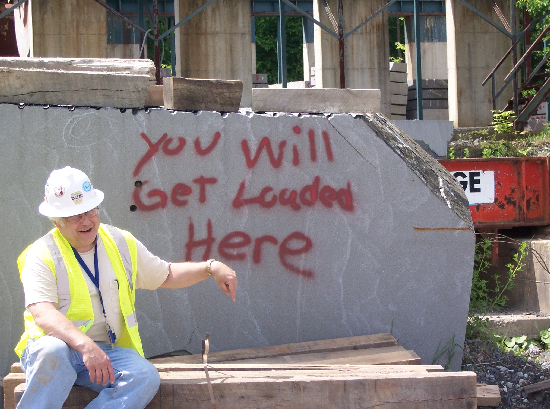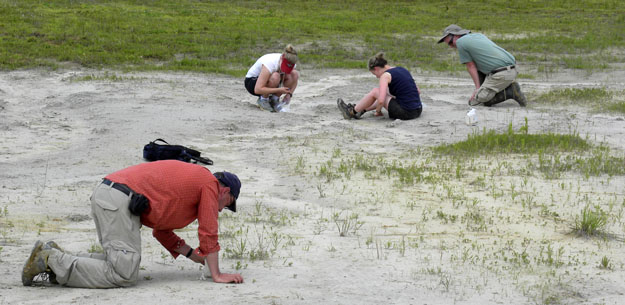STARKVILLE, MISSISSIPPI — Early this morning we left Demopolis, Alabama, and drove to Livingston, home of the University of West Alabama. Our first localities, in fact, were very close to campus as we again explored the Upper Cretaceous Prairie Bluff Formation.

Megan, Caroline and Paul doing the paleontology thing on an outcrop in Livingston, Alabama (N 32.59827°, W 88.19301°). The scene looks pretty quiet and usually is, except for the occasional utterance like, "Cool! More cyclostomes!". It is a culture all to itself.
In the early afternoon we crossed the border into Mississippi. It may be our imagination and a limited sample size, but we swear the accents got thicker and the British among us especially had difficulty understanding it. The fossils, though, know no boundaries and were just as good as their Alabama cousins.
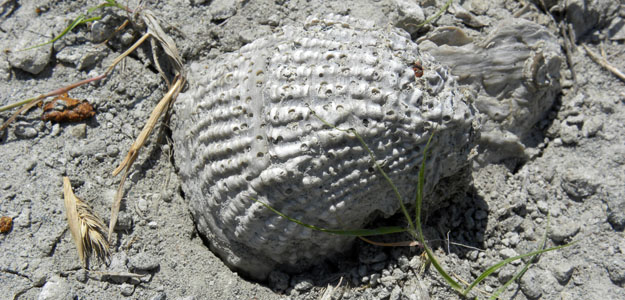
A bored oyster waiting patiently to be collecting on a Mississippi outcrop of the Prairie Bluff Formation (N 33.48371°, W 88.85309°). The evenly-spaced holes were produced by an endolithic clionaid sponge. Note the splendid preservation of the shell and just the right kind of weathering. This is the kind of outcrop where you wonder why more people aren't here picking up this great stuff!
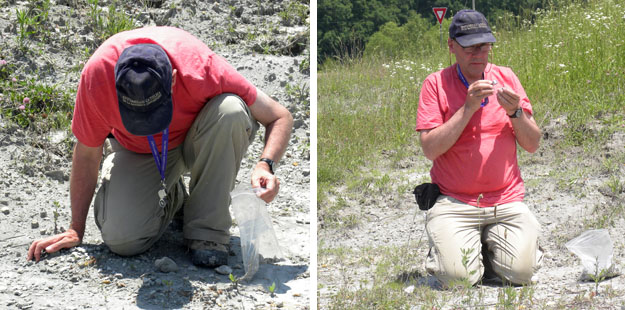
Her Majesty's Own Bryozoologist, Dr. Paul D Taylor, in action on a Mississippi outcrop. (Shout-out to Emma: This is the best I can do with your father. Always crouching close to the ground, he is. Bendiest man in paleontology.)



